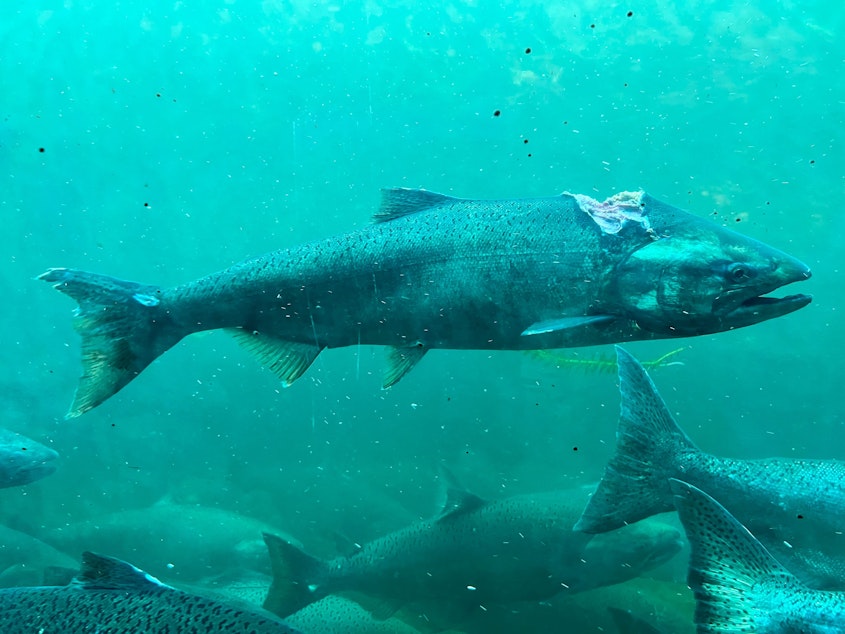This Seattle salmon has a huge bite out of his head. Will it reach its home stream?

There was a star at the Ballard Locks this weekend – a salmon with a grisly chunk taken out of its head.
It was there on Friday. And it was still there Saturday.
Would it make over the fish ladder? Visitors wanted to know.
It was one of many salmon flowing through the Ballard Locks in Seattle – one of the strongest runs in the last decade.
A seal is likely to blame. They prefer smaller Sockeye salmon but that doesn’t stop them from trying their luck with a much larger Chinook salmon.
Sponsored
"That was brutal, huh?" said Minette Yu. "I felt like, you know, I want to cheer that fish up. Like, please continue the journey. It’s hard."
The tough odds make us empathize. For thousands of eggs laid, only a couple of salmon make it back. And there are predators along the way – like whatever mauled this poor salmon.
The fish ladder is just one obstacle, by the way.
Then it has to swim through the Ship Canal, the Sammamish River, Lake Sammamish, all the way to the Issaquah hatchery where it was spawned.
Outside, Ballard Locks tour guide Stacey Gilbert answers questions about fish all day long. She humors one from this reporter about a certain fish with a bite on its back.
Sponsored
"That happens a lot," she said. "Just because they have a bite doesn’t mean they won’t make it up to the river to spawn. If it’s a powerful fish, and it has enough food in its body, it probably will make it."
It still has a long journey ahead. Climate change has pushed stream temperatures higher than salmon like.
The numbers of Chinook at the Ballard Locks are high this year. Not record-breaking or anything, but stronger than average for the last 10 years.
State wildlife biologist Aaron Bosworth said the Chinook run is higher for several reasons, including good ocean conditions, a hatchery program that's been consistently productive for several years, and help from the Muckleshoot Tribe reducing invasive predators like yellow perch and bass that eat juvenile salmon.
"This is all like, breathtaking to me," said Isabella Gamboa, who's visiting from Dallas, as the salmon swim quietly by in the windows before her.
Sponsored
Her friend Daniel Varela brought her here. He says it’s natural encounters like this one at the locks that made him fall in love with this place, after moving here from Dallas.
“It makes me want to live here a lot longer than I ever thought I would,” he says.
We reached out to Stacey Gilbert on Tuesday afternoon to see if the fish had made it up the fish ladder. She said it appeared it had, but she wasn’t optimistic.
“When I first commented on it, I hadn’t seen it yet,” Gilbert said. “Later on that day, I saw that fish, and I didn’t think it would make it because it didn’t look very healthy.”
She worried that if the salmon lingers in the warmer lake waters, it could get an infection.
Sponsored
“There’s always a slight chance it could make it to the river,” she said.




